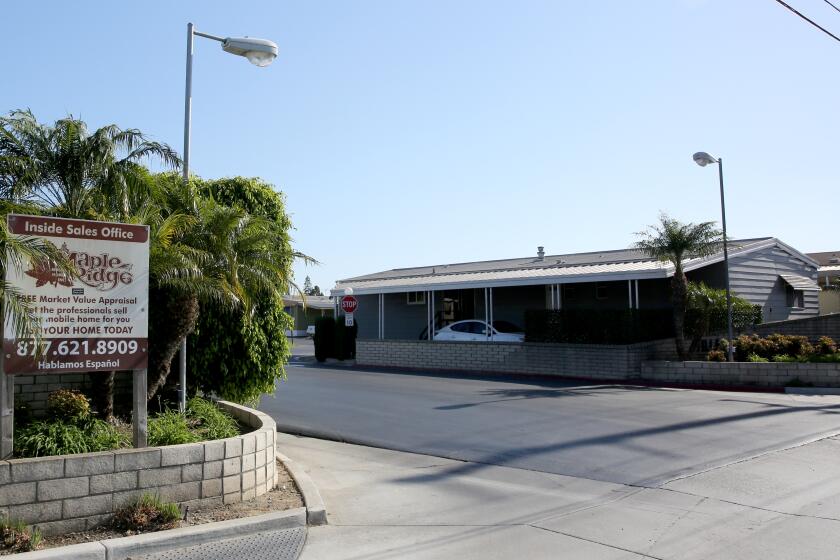Fantastic with 4 Cylinders
- Share via
America, we feel your pain and it doesn’t just have to do with the price at the pumps: it’s the car that goes along with trying to keep gas money in your pocket.
For years, driving a fuel-efficient vehicle was presumed to be solely a money issue. If you were concerned that the price of gas was eating you out of house and home when it was $1 a gallon, then you probably wanted a cheap car, too: just the basics to keep the sticker price down.
Times change and with gas at $4 a gallon, fuel might be eating a lot more people out of house and home: those driving thirsty high-dollar sport-utility vehicles and luxury cars.
But hold the phone. Why do well-equipped vehicles — even luxury vehicles — have to be thirsty? Why can’t we have all the amenities and technology we’re used to but without the wide-eyed look when the gas pump finally goes “click.”
Actually, we’re gradually heading that way, but it means running with smaller and more fuel-efficient engines. That might seem like a contradiction since we’ve been conditioned to believe that the vehicle with the biggest and baddest engine always comes with the best features. It’s not only outmoded thinking, but that style of marketing actually excludes a growing number of buyers who don’t mind spending the money to buy the vehicle they want, but just don’t want to needlessly spend money on gas to propel it around.
What does the number of cylinders have to do with your amenities? Nothing if you happen to be Volkswagen or Audi, a German automaker that has the fun-with-four-cylinders factor dialed in without skimping on the goodies.
The new front-wheel-drive 2009 VW Passat CC sedan appears to be a great refuge for buyers looking for a big step up in style and cachet without paying the price in fuel dollars.
The base engine for this style statement is a 200-horsepower turbocharged four-cylinder with an estimated rating of 21/29 mpg city/highway. You’ll get the usual assortment of power goodies plus air conditioning and access to a plethora of options. You won’t be able to get all-wheel-drive, which is the exclusive domain of the optional V6, but you will have your choice of a six-speed manual transmission or six-speed automatic. The base price is expected to be in the $27,000 range.
The 2.0-liter turbo engine is no slouch, either, with somewhere around 250 pound-feet of torque, that propels the Passat CC to 60 mph in a claimed 7.5 seconds.
It’s roughly the same base powerplant you’ll find in the sharp new Audi A4 sedan and several other products from the Audi/Volkswagen camp, including the snappy Audi A3 wagon, which is rated at a miserly 24 mpg in city driving.
Having to deal with high gas prices for many more years than North Americans means that German automakers have had a lengthy headstart when it comes to creating comfortable and competent road machinery that’s good on gas. They have to, of course, when that gas costs the equivalent of about $10 a gallon. Expect to see more diesel models, too, from Germany, which are powerful, efficient, have vastly improved (as in lower) noise levels, vibration and harshness, not to mention lower emissions thanks to improvements in the engine design as well as the fuel itself.
Truthfully, there are few competitors at this level, but Acura won’t easily be outdone with its new 2009 TSX. The loaded-up compact sedan possesses wonderful style, a well-detailed interior and a 21-mpg city rating from its high-revving 2.4-liter four-cylinder engine. Unlike the Passat CC and A4, the TSX has no optional V6. It’s one well-equipped model with one engine that’s backed by a six-speed manual transmission or an optional five-speed automatic.
Since it’s not turbocharged, the TSX is light on torque when compared to the Audi/VW engines, but that doesn’t seem to hurt the car’s overall good nature.
But when it comes to wagons, which are all the rage these days, a heavier vehicle such as the Acura RDX adds a turbocharger to a 2.3-liter four-cylinder engine for a total of 240 horsepower. A recent addition to the Acura fold, the RDX can be had as loaded-to-the-hilt as you like and comes with all-wheel-drive, all the while returning an in-city fuel-economy rating of 17 mpg, about four mpg less than the TSX.
In the wagon category, you also have the choice of the closely competing Mazda CX-7 that also uses a turbocharged 2.3-liter four-cylinder, an engine that makes 244 horsepower. Similar in size and fuel economy but definitely swoopier than the RDX, the CX-7 has a lower entry price, less base equipment and standard front-wheel-drive. Adding all-wheel-drive, leather and all the other goodies will put you in the RDX’s range.
An interesting alternative is the Nissan Rogue, a small tall wagon that can be optioned up with leather and all sorts of goodies. For a starting price of about $19,500, however, it comes with a thrifty 170-horsepower 2.5-liter four-cylinder (non-turbocharged) front-wheel-drive (all-wheel-drive is optional) and an in-city fuel-economy rating of 22 mpg (21 for AWD models). Loaded up, the Rogue comes in right at the $30,000 mark, but that includes navigation, all-wheel-drive and a moonroof.
There are a few other vehicles that don’t skimp much on features even if they have just four cylinders, such as the Mini Cooper and the Saab 9-3, and you can always opt for four-cylinder versions of the Chevrolet Malibu, Honda Accord and Toyota Camry with up-level equipment.
It might require a little searching, but you really can have your features and keep more gas money where it belongs: in your pocket.
All the latest on Orange County from Orange County.
Get our free TimesOC newsletter.
You may occasionally receive promotional content from the Daily Pilot.



